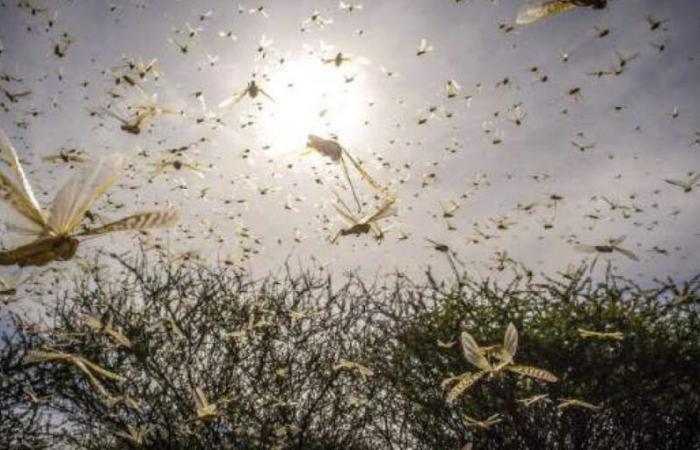The approach of summer is a period conducive to the spread of pilgrims locusts, after winter rains and those of spring. The Moroccan authorities maintain reinforced vigilance, while FAO has already alerted the majority of North African countries to the risk for cultures and pastures.
It is a FAO alert and which enters its critical phase! The United Nations Food and Food Organization attracted, a few weeks ago, the attention of North African countries, including Morocco, on the probability of hatching pilgrims as summer approaches in certain regions.
“These bands could turn into small swarms in May and June, increasing the risk for crops and pastures,” said Cyril Piou, responsible for surveillance and acridian forecasts at FAO.
At the beginning of May, the vigilance is the level of the National Anti -Donnaire Center, the organization responsible for preventing and overcoming any invasion of pilgrims.
“The acidic situation that Morocco is currently experiencing is a completely normal situation, especially when there are rains that fall into regions concerned by the permanent presence of pilgrims. We are not yet in an invasion phase, ”reassures, for his part, Thami Ben Halima, FAO expert and international consultant.
2,249 hectares treated
Already, it should be noted that awareness and the first actions on the ground have been undertaken for a few weeks, by the Moroccan authorities, after the detection of acidic activity signs in several areas located south of the Atlas, in particular along the Drâa and Ziz-Ghris valleys.
Thus, wrestling operations were carried out on a total area of 2,249 ha, including 2,000 ha treated by air. The aim of these actions were to contain the reproduction of pilgrim locusts before they reach a stage of massive proliferation.
For the moment, it is the vigilance that continues, especially since the level of mobilization may not be the same everywhere in the countries of North Africa and the Sahel.
“Winds and precipitation facilitated the migration of locusts to the north from southern Algeria, northern Mali, Niger and Chad,” said FAO recently.
“But with the arrival of the monsoon rains in certain Sahelian countries, it is more likely that these pilgrim locusts return to the south, rather than going back to the north,” said Thami Ben Halima, who was expressed during a program in a Place television channel.
SAHELO-SAHARIENNE COOPATION
It should be noted that in the North African space and West Africa, the last major massive invasion of pilgrims dates back to around 20 years. Since then, the countries concerned have joined their forces to coordinate their struggle from Acridian danger.
Besides, it is with this in mind that an executive of cooperation bringing them together ended up seeing the light of day. Thus, last February, a new meeting of national actors involved was held in Marrakech.
It should also be noted that if most countries in North Africa maintain their operational activities, the security situation in the Sahel countries complicates coordination, especially in areas where states interventions become less and less obvious.
Finally, as a reminder, you should know that the pilgrim locust is one of the most destructive migratory pests in the world. Only one swarm can cover one to several hundred square kilometers. A square kilometer of swarm can contain up to 80 million adults, capable of consuming in one day the same amount of food as 35,000 people, says the UN agency.
Cyril Piou
Responsible for monitoring and acridian forecasts at FAO
“Prospecting and control operations are particularly urgent in places where the rains of winter and early spring have created conditions conducive to reproduction. FAO forecasts since January indicate that hatching and band training would begin this month in affected areas. If they are not controlled, these bands could turn into small swarms in May and June, increasing the risk for cultures and pastures. ”
Thami ben Halima
FAO expert and international consultant
“The acidic situation that Morocco is currently experiencing is a completely normal situation, especially when there are rains that fall into regions concerned by the permanent presence of pilgrims. We are not yet in an invasion phase. ”
Abdellah Benahmed / Eco inspirations








